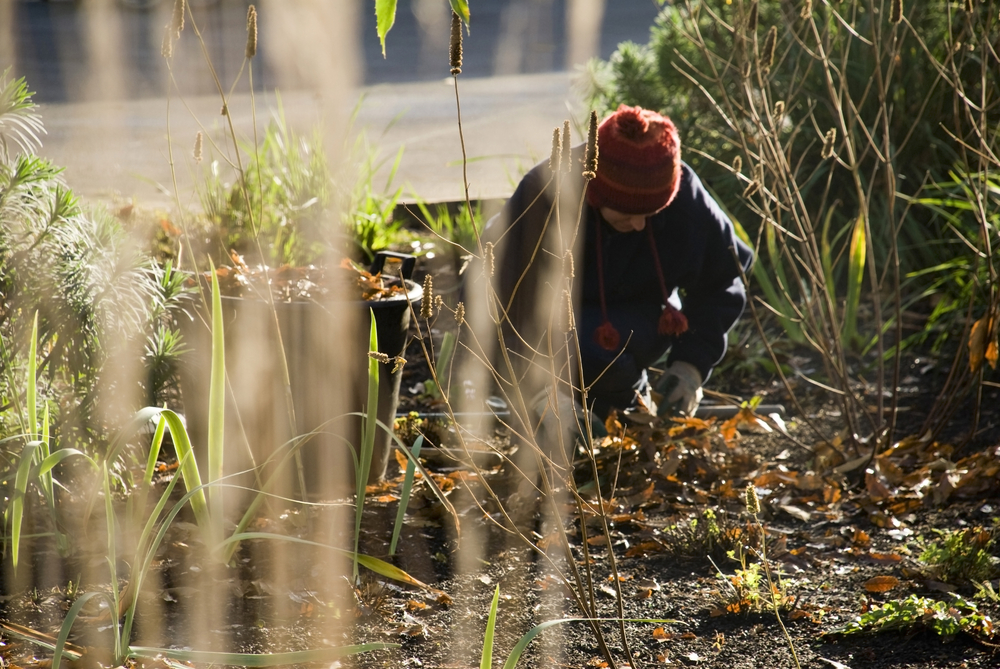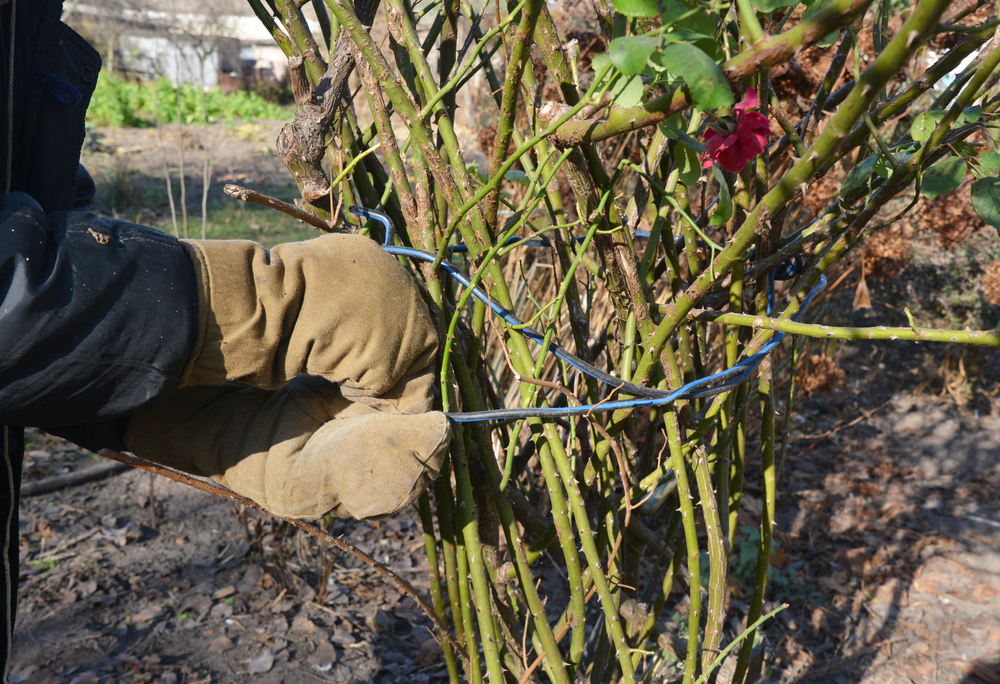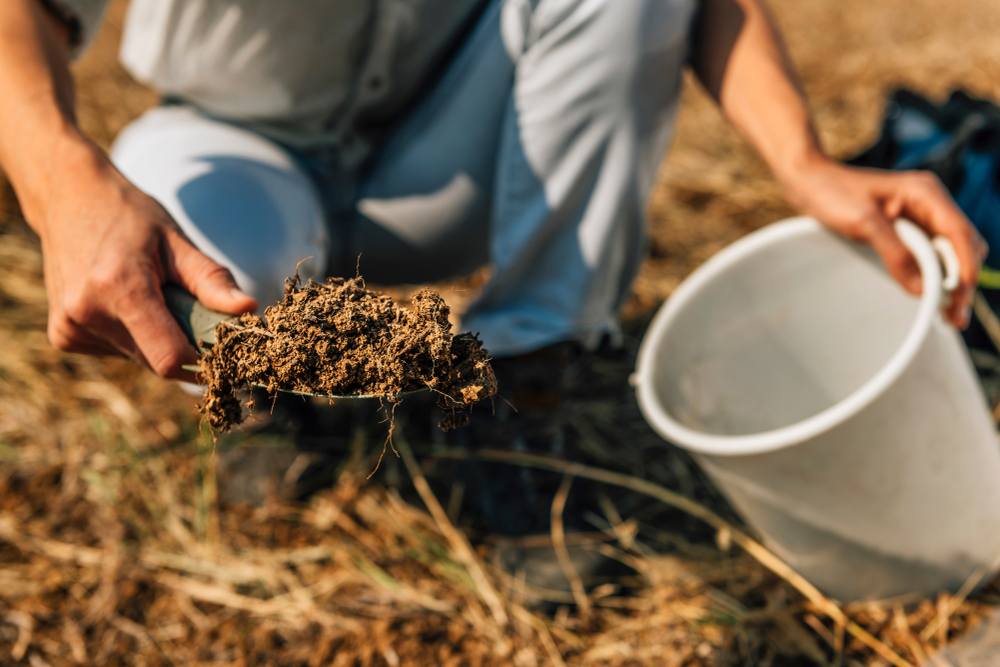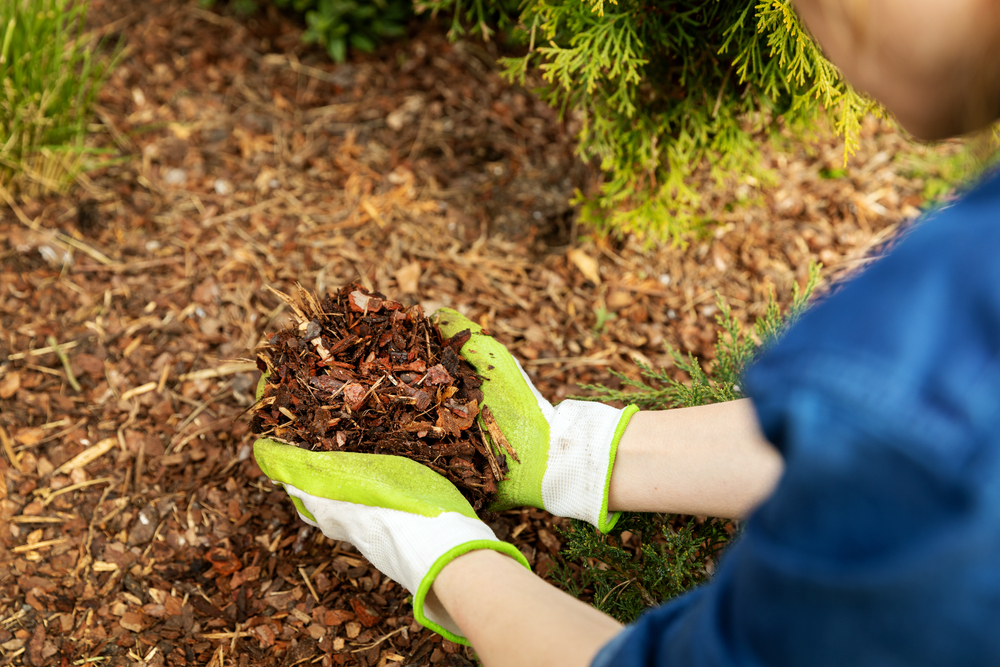How to Prepare Your Garden for Winter
Tips for getting your plants and soil ready for winter to help prevent disease problems next season.
How to Prepare Your Garden for Winter
Tips for getting your plants and soil ready for winter to help prevent disease problems next season.

Liken all this prep to a bedtime routine for your garden.by Image Conscious, Shutterstock.
We’re near that time of year when the ground freezes and the gardening season comes to a close. There’s a common misconception that once you’ve hauled that final crop out of the ground or your flowers start to shrivel that it’s time to pack it in, resuming all growing activities once spring rolls around.
Not true! More seasoned growers will tell you that the steps and small details you pay attention to during the off-season will result in a garden with healthier soil, meaning fewer chances for disease-ridden plants and a more abundant harvest.
Now is the time to get your garden ready. To help, we’ve compiled a list of tips and tricks that will ensure your garden enters its prime once the ground thaws again and it’s time for roots and seeds to sprout.

Tend to your trees and shrubs
Before the fall of the first frost, give your trees and shrubs special attention. This includes a generous watering to ensure there’s moisture when you wrap them.
Wrapping your trees will protect them all winter from all the elements as well as any animals or pests. To wrap your trees and shrubs, we suggest using burlap. When you wrap your trees, you can attach the top of the material to a central branch of the tree with a clothespin. Start wrapping the burlap around the tree, down toward the ground. Cover around the truck and the lower branches.
You can retrace your wrapping path by going back up the tree and slightly overlapping the burlap. Cut your burlap and attach the end piece to a starting branch with a clothespin. Tie pieces of twine around the tree at the top, middle and bottom to secure the tree.
Remove excess vegetation
Eliminating any dead plants and rotting fruits and vegetables is a must. You don’t want any chance of future plant material getting infected or re-infected. This is especially important if any material is showing signs of disease, mildew, mold or blight. You can do this either by throwing it in the trash or burning it.
If the excess vegetation looks healthy, toss it in the compost bin. Pull out any remaining weeds and, if they look healthy, too, you can throw them in as well.

Check your soil
Healthy soil is the basis of healthy, nutrient-rich plants. It’s important to make sure the ground is in good shape before it gets tucked away under frozen ground and snow during the winter.
A soil test will help you determine soil pH levels, concentration of potassium, phosphorus, calcium, magnesium and sulfur, amount of organic matter and lead content. In other words, you’ll know whether or not you’ll need to add any sort of amendments going forward. A lot of gardeners will add lime, which provides a boost of calcium carbonate and magnesium carbonate and has all winter to dissolve into the ground.
Don’t know the process for testing your soil? Here’s our how-to that will help prime you on best practices before, during and after you take your samples.
Prep your perennials
Before the ground freezes, water your perennials to lock in moisture for the winter.
If you didn’t already clear out dead foliage from these long-hauling garden dwellers, now is the time. For perennial plants that have finished growing for the season, cut back their stems so they are about 3 to 4 inches from the ground. You want to leave enough so there’s material that can be sheltered in mulch and compost (see next step) once the ground freezes. If you need further guidance, check out this list of perennials to cut back.
There are certain perennial bulbs, such as dahlias, elephant ears and calla lilies that cannot survive winters in cold climates. For pretty much any tropical bulb variety that you’ve planted, carefully remove them from the ground and store in a safe, dry place.
For any newly planted perennials, in addition to creating a mulch and compost barrier around its crown (see below; once again, you may also want to think about building on this with chicken wire or tomato cages. You can stuff them with leaves, straw or another mulch for further protection). Again, it’s important to wait for the ground to freeze before doing this or else you can attract rodents who are looking for a cozy place to hibernate.
Lastly, if you have garlic, you can still plant it, but do it sooner rather than later! See our how-to on this for more information. You can also use this time to plant any other hardy fall bulbs. More information is available here if you’re not sure what to plant.

Add mulch and compost
Once you’ve removed all unwanted plant material and tended to what will remain in your garden over the winter, you can add a layer of compost. We suggest it be about 1-2 inches thick. This will allow your soil to soak up nutrients over the winter. We suggest adding another 1-2 inches of mulch over your compost, too. This will help prevent soil erosion, nutrient leaching and weed development. It also works as insulation, shielding soil from any ebbs and flows of thawing, freezing, sunshine and winds. When the soil is kept at a consistent, cool temperature, this also ensures everything in the garden stays in a dormant state.
If you have perennials in your garden, pack on another layer, about 2 inches thick, once the ground freezes. Materials such as shredded leaves, bark or wood chips, pine needles and straw are all good winter mulch choices. This added layer will help especially sensitive perennials and serve as a bigger buffer to snow.
Disinfect all gardening materials
Any seed trays, garden pots and other gardening equipment should be sanitized and disinfected. This is another necessary step to kill off any chance of mold or disease that could linger into the following season.
We suggest first getting rid of any remaining soil on materials. This may involve soaking them in soapy water and/or using a brush with tough bristles to scrub them.
Next, you’ll want to disinfect your containers and tools. We recommend using a mixture that’s one part bleach and nine parts water. Let your materials soak in this water for about 10 minutes. If you are resistant to the idea of using bleach, use a mixture of 2.5 parts water and 0.5 part hydrogen peroxide instead. For the latter option, let everything sit for 20 minutes.
If you have terra cotta containers, soak them afterwards in plain water for an additional 10 minutes to ensure no chemicals remain on them.
You can let all materials air dry before storing them away.
Time for reflection
You’ve done all the hard work, so now it’s time to take a moment to think about how this year went. Were there certain varieties that did or didn’t do well? Do you remember some of the problems you experienced? The most dedicated gardeners will take stock of the season and use their off time to research potential solutions or understand why things happened the way they did.
You should also use winter as time to plot your spring garden plan, developing a map of what to plant and where. That way, you’ll have ample time to source seeds and supplies.
Follow us
This work is licensed under a Creative Commons Attribution-NoDerivatives 4.0 International License.
Want to republish a Modern Farmer story?
We are happy for Modern Farmer stories to be shared, and encourage you to republish our articles for your audience. When doing so, we ask that you follow these guidelines:
Please credit us and our writers
For the author byline, please use “Author Name, Modern Farmer.” At the top of our stories, if on the web, please include this text and link: “This story was originally published by Modern Farmer.”
Please make sure to include a link back to either our home page or the article URL.
At the bottom of the story, please include the following text:
“Modern Farmer is a nonprofit initiative dedicated to raising awareness and catalyzing action at the intersection of food, agriculture, and society. Read more at <link>Modern Farmer</link>.”
Use our widget
We’d like to be able to track our stories, so we ask that if you republish our content, you do so using our widget (located on the left hand side of the article). The HTML code has a built-in tracker that tells us the data and domain where the story was published, as well as view counts.
Check the image requirements
It’s your responsibility to confirm you're licensed to republish images in our articles. Some images, such as those from commercial providers, don't allow their images to be republished without permission or payment. Copyright terms are generally listed in the image caption and attribution. You are welcome to omit our images or substitute with your own. Charts and interactive graphics follow the same rules.
Don’t change too much. Or, ask us first.
Articles must be republished in their entirety. It’s okay to change references to time (“today” to “yesterday”) or location (“Iowa City, IA” to “here”). But please keep everything else the same.
If you feel strongly that a more material edit needs to be made, get in touch with us at [email protected]. We’re happy to discuss it with the original author, but we must have prior approval for changes before publication.
Special cases
Extracts. You may run the first few lines or paragraphs of the article and then say: “Read the full article at Modern Farmer” with a link back to the original article.
Quotes. You may quote authors provided you include a link back to the article URL.
Translations. These require writer approval. To inquire about translation of a Modern Farmer article, contact us at [email protected]
Signed consent / copyright release forms. These are not required, provided you are following these guidelines.
Print. Articles can be republished in print under these same rules, with the exception that you do not need to include the links.
Tag us
When sharing the story on social media, please tag us using the following: - Twitter (@ModFarm) - Facebook (@ModernFarmerMedia) - Instagram (@modfarm)
Use our content respectfully
Modern Farmer is a nonprofit and as such we share our content for free and in good faith in order to reach new audiences. Respectfully,
No selling ads against our stories. It’s okay to put our stories on pages with ads.
Don’t republish our material wholesale, or automatically; you need to select stories to be republished individually.
You have no rights to sell, license, syndicate, or otherwise represent yourself as the authorized owner of our material to any third parties. This means that you cannot actively publish or submit our work for syndication to third party platforms or apps like Apple News or Google News. We understand that publishers cannot fully control when certain third parties automatically summarize or crawl content from publishers’ own sites.
Keep in touch
We want to hear from you if you love Modern Farmer content, have a collaboration idea, or anything else to share. As a nonprofit outlet, we work in service of our community and are always open to comments, feedback, and ideas. Contact us at [email protected].by Lindsay Campbell, Modern Farmer
December 5, 2021
Modern Farmer Weekly
Solutions Hub
Innovations, ideas and inspiration. Actionable solutions for a resilient food system.
ExploreExplore other topics
Share With Us
We want to hear from Modern Farmer readers who have thoughtful commentary, actionable solutions, or helpful ideas to share.
SubmitNecessary cookies are absolutely essential for the website to function properly. This category only includes cookies that ensures basic functionalities and security features of the website. These cookies do not store any personal information.
Any cookies that may not be particularly necessary for the website to function and are used specifically to collect user personal data via analytics, ads, other embedded contents are termed as non-necessary cookies.
I was surprised and upset to see a (stock) photo of red mulch (labeled on the bag) in your section above on winter preparation. The dye in red mulch leaches into the soil, along with other possible toxic contaminants, with serious possibilities for harming organisms. Certainly only clean natural mulch should be used?!
Nothing said about cover crops!
Just like pruning shrubs, take the opportunity to remove dead/sick tree limbs. Chip these branches into your beds to prevent erosion and once temps warm up in the Spring, sow directly into the decomposing chips. The slight heat being emitted from decomposition will incubate your seeds until it’s time to sprout!